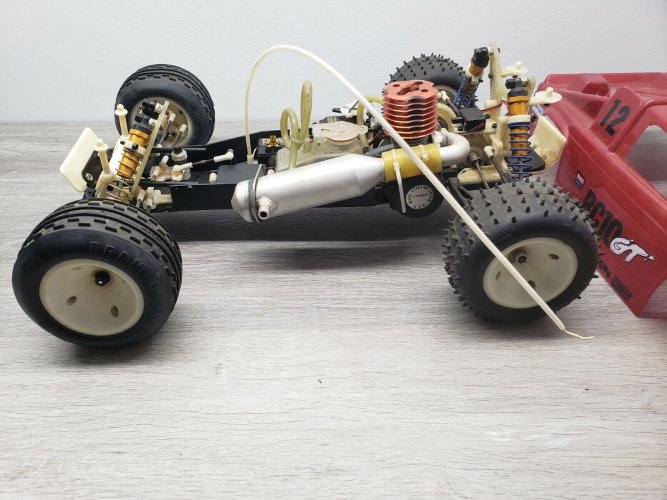I'm not yet ready to start on the two bodies that I have for this project but figured why not post up some from +/- 25 yrs ago. I was fortunate enough to find these old photographs in an old box of memorabilia and although I wish I still had some of these bodies, at least I've got some pics. Pretty poor quality but regardless, this thread needs more pics.
Very first RC body I ever did. I wasn't ready to do any graphics but figured a color transition was worth a shot. Black to metallic purple to metallic magenta...

Black to blue with white to flo yellow to green for the flames. Pretty simple but it came out well. I think this was my second body/ first attempt at graphics...

Maybe my forth or fifth body here. I was starting to dig doing graphics...

Kept trying new color combinations/ transitions/ graphics. I liked that there were really no limitations. White with metallic purple to metallic blue for the flames...

White to teal to black and magenta to black with some yellow to give it a little more 'pop'. The 90's really were a lawless time lol...

One of my all time favorites. White to silver and then added red/ blue stripes and white stars. I loved this one...

T-Maxx body...

And another T-Maxx body. Metallic blue to black and then flames were white to silver outlined in royal blue...

Group shot ( although with at least a half dozen missing)...

Very first RC body I ever did. I wasn't ready to do any graphics but figured a color transition was worth a shot. Black to metallic purple to metallic magenta...

Black to blue with white to flo yellow to green for the flames. Pretty simple but it came out well. I think this was my second body/ first attempt at graphics...

Maybe my forth or fifth body here. I was starting to dig doing graphics...

Kept trying new color combinations/ transitions/ graphics. I liked that there were really no limitations. White with metallic purple to metallic blue for the flames...

White to teal to black and magenta to black with some yellow to give it a little more 'pop'. The 90's really were a lawless time lol...

One of my all time favorites. White to silver and then added red/ blue stripes and white stars. I loved this one...

T-Maxx body...

And another T-Maxx body. Metallic blue to black and then flames were white to silver outlined in royal blue...

Group shot ( although with at least a half dozen missing)...










